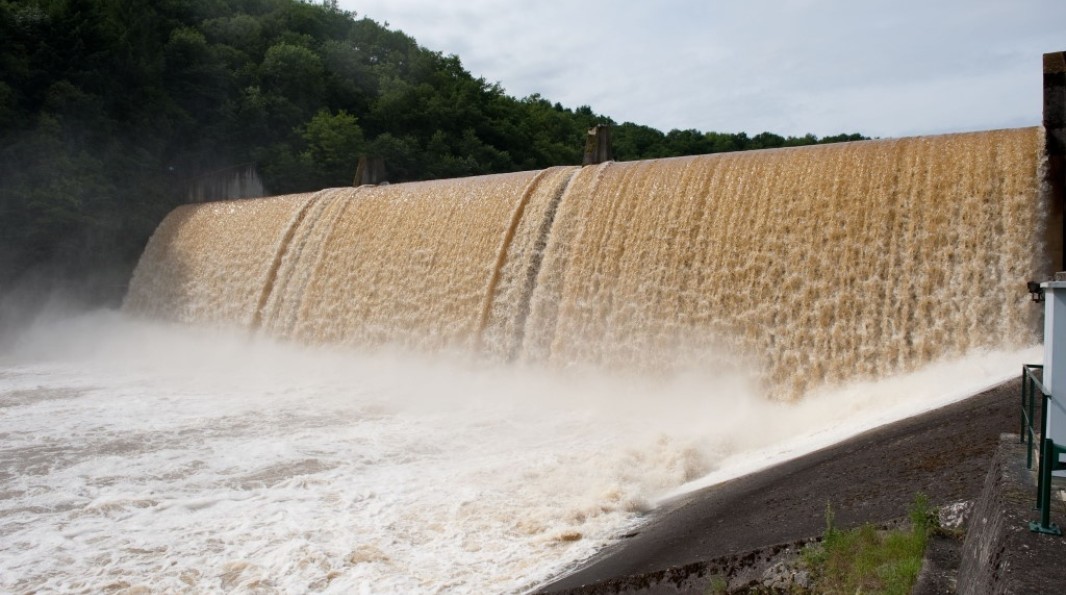Preparing for floods to ensure safety of installations
Floods are a natural phenomenon. They constitute a risk for people and for the safety of hydropower installations. EDF dams are designed and operated to avoid exacerbating the problem. To mitigate the consequences of flooding, installations are fitted with flood discharge systems to cope with extreme flow rates. EDF also carries out daily weather monitoring to anticipate any out-of-the-ordinary weather events.

Hydroelectric facilities are designed to accommodate the consequences of extreme weather situations – drought, heat waves, cold snaps, and so on. Flooding is one of the worst such events since it can hamper electricity generation or even damage the structures by increasing pressure on them.
To cope with flooding, dams are fitted with flood discharge systems. EDF regularly adjusts the flow rate to which these systems are subjected and if necessary upgrades them. New discharge systems have been fitted on 60 dams in recent years.
In the Haute-Vienne department, the discharge system at the Saint-Marc dam can handle up to 20 times the flow rate of the Taurion River.
EDF has worked with the public authorities to develop instructions for the use of discharge systems in periods of flooding. At each site, employees are trained on a simulator and then certified to operate these tools. Two principles govern their work:
- maintain the level of the reservoir below its maximum authorised level in order to avoid submerging the dam
- ensure that the maximum flow rate from the dam never exceeds the upstream flow rate so as not to magnify the natural flood.
Only dams with large reservoirs such as the Crescent dam in the Morvan area, designed to protect Paris, are in a position to mitigate the effects of flooding.
Hydro-meteorology: day-to-day monitoring
EDF has been continuously monitoring the rivers on which its hydroelectric power plants are located for over 40 years. This hydro-meteorological monitoring is the responsibility of its General Engineering Division (DTG), which has a staff of 600 and is headquartered in Grenoble.
1,100 EDF measurement stations carry out hydro-meteorological monitoring in France
The hydro-meteorological model designed by DTG covers hazards due to wind and storms and the probability of extreme precipitation and sticky snow. It analyses watercourse flows over a period ranging from several hours to several days. It also monitors the filling of reservoirs by rain and snowmelt.
DTG bases its work on data that is continuously transmitted by a network of 1,100 measuring stations. It receives additional information from the Météo France weather service and the Regional Environment, Development and Housing Directorates (DREAL).
The goal is to collect reliable measurements that can help operators anticipate the consequences of exceptional weather events and take preventive action.
Thanks to all these measures, none of EDF’s hydro facilities, which have an average age of 60, has experienced major damage due to flooding.

